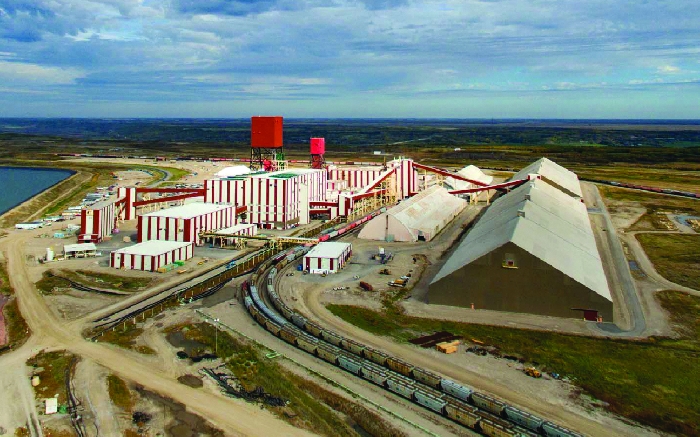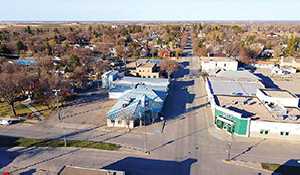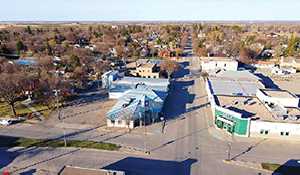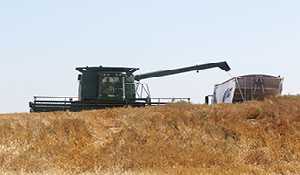Moe says there is a bright future for Sask. mining industry
November 23, 2020, 10:42 am


World-Spectator editor Kevin Weedmark spoke to Saskatchewan Premier Scott Moe on Friday, November 20 about the future of Saskatchewan’s resource industries:
How important are Saskatchewan’s resource industries to the province?
Very important, not only for the employment they create locally in your coverage area and across the province, but also also for the way the participants in this industry give back to our communities, and you also see that locally in your coverage area as well.
More broadly, the importance of the mining sector in particular, and the associated manufacturing sectors is huge.
The mining sector in particular in the province is responsible for 10% of our gross domestic product. The mining sector employs directly over 10,000 people across Saskatchewan and exports over seven and a half billion dollars worth of product—potash predominantly, but also uranium, gold, coal, sodium-chloride, sodium-sulfate. In addition to those 10,000 direct jobs, each of those jobs create at least two additional jobs in supply, manufacturing, and supporting some of the expansions that we see happening in the mines in your coverage area, in Esterhazy and Rocanville for example. It is extremely important at the community level, but our mining sector is also extremely important at the provincial and national level as well.
How do you feel the resource industry, particularly mining, has adapted and responded to the Covid-19 pandemic?
Above and beyond! Our public health office was in touch with our mining sector very, very early in this pandemic. The mining sector deserves a great degree of appreciation from the broader community. The mining sector has put in place—not just in potash but in all our mining sector across the province—put in protocols that have been above and beyond anything that Public Health has mandated or put into public health orders.
We have heard of cases of Covid-19 in our people that work in the mining sector but we have not heard of wide scale outbreaks in the mining sector. I have talked to all those involved, their health and safety teams, keeping their employees safe, but also from a community level they have been a big part of ensuring that our infection rates have not been higher, and our mining sector has not been a conduit for infections in our broader community, so thank you to all involved.
Here in our area we had 400 people working on the Enbridge Line 3 surface remediation through the summer, then in the fall we had a large number of workers in the area for a project at Nutrien Rocanville this fall, yet we have been able to maintain one of the lowest rates of infection in the province.
That’s a great point that it isn’t just the mining sector that has gone above and beyond to keep these individuals safe and by extension keeping our community safer. All those people are staying somewhere, quite often in and around those communities, they’re eating somewhere in and around the community, and we are extremely appreciative to have that economic bump, in particular at this time. But we are also thankful for everything that our hospitality industry has done to ensure that everyone is safe who are in our communities that are doing this type of work. It’s a Herculean effort and my hats off to everyone that’s been involved, and nowhere is that more evident than in and around the Moosomin area, the mining, the energy and the manufacturing sectors.
Some industries have had to slow down or close temporarily because of Covid-19 restrictions. How important is it to the provincial economy that the resource industry continues to operate through the pandemic?
It has been of vital importance, you are exactly right, many in our hospitality sector and our retail sector have had a tough road to travel in the course of the last six to eight months managing their way through Covid-19. The fact that the resource sector has stepped up and ensured they have safe workplaces, that has been huge from an economic perspective, and the sector continues to provide an opportunity for jobs for so many Saskatchewan people.
From a community morale and a mental health perspective, continuing to have a broad sector of people in our community and across the province that are still able to carry on life—although different to some degree—much more normal than they are able to in other sectors is huge. It is huge that they have been able to operate in our mining sector throughout this pandemic and in many cases I think this probably prepares us for a great opportunity when the world finds itself in a post-covid situation.
Saskatchewan, I’ve always said, does have the food, fuel and fertilizer to provide for a recovering global economy and at no time is that going to be more important than as the world starts to recover from Covid-19, hopefully sometime in 2021. We are well placed to do that, we have proven that our mining sector in particular can operate safely throughout.
I think there are some recent numbers out that potash mining in particular is up 35% this year. Not only have they been operating, they have been operating at an enhanced production level, and I think that’s something that everybody that is involved in that industry can be very proud of.
We’ve had some major investments in potash mining in our area. There was a multi-billion dollar expansion at the Nutrien Rocanville mine and the ongoing multi-billion dollar K-3 expansion at Mosaic Esterhazy. What does the province need to do to ensure those kind of investments continue to be made in Saskatchewan?
We need to ensure that the operating environment that we have here in Saskatchewan continues to be stable, and ensure the certainty of regulation that the industry is operating in. All industries look for certainty and stability, even more so in the last eight months when we have all been dealing in a very uncertain environment, with Covid-19 being in our communities, in our workplaces, affecting everything we do in our daily lives. That certainty is even more sought after today than it has ever been.
Also it’s important to work with these industries and the mining sector to ensure that we are advocating for a similar type of certainty in other levels of government and around the world—certainty of market access for example.
What we are doing is working closely with our mining sector, our agricultural sector, our energy sector on maintaining market access and expanding that market access. We are opening up three Saskatchewan operated trade offices in countries in other areas of the world. When those come up to speed and are operating we are going to look to expand that, as well.
Certainty of operating environment, of regulatory environment that they’re operating with here in Saskatchewan and Canada are important. We most certainly advocate for our federal government to provide that kind of environment.
We should never forget that this small province in the prairies of Saskatchewan sells products to 150 countries all around the world. And one of the largest exporters that we have is the potash industry, so we work very closely with them on providing them with certainty in every way we can.
What do you see as the greatest challenges that are facing the energy producers and miners in the province right now?
That very certainty, first with the global prices, and they have fluctuated a bit, but I think in the short-term to medium-term looks reasonable in the potash industry. Our volumes are up, which is a positive sign.
The uranium industry, the medium-term outlook is looking relatively stronger than it has over the course of the last few years. And we have some opportunities on the rare earths side. I think Saskatchewan will be the center of attention not only in Canada but across North America.
Certainty in that global price and that market access, but also certainty on the regulatory side. We have worked very closely with the potash industry in particular, but also our other mining industries on doing what we can to provide as much regulatory harmony and alignment as we can and doing some advocating with those industries, with our federal government on some changes that have been coming and continue to come from our federal government that do have an impact on the mining industry.
I don’t need to rehash Saskatchewan’s position on bills like C69 and the federal carbon tax. Just this week now we have bill C12 that has been introduced which is a target of going to net zero carbon emissions by 2050 in the nation of Canada. We are working with the industry and with other industries to ascertain what impact that may have on our mining industry.
On Bill C-12 specifically, the province received little to no consultation on that particular bill, and I don’t know if the industry received a whole lot of additional consultation. And that’s somewhat problematic, when you see a level of government that isn’t working with industry to at least understand what the impacts of a specific piece of legislation will be.
That is an example of where there may be some uncertainty that arises, and we need to work closely with the industry and advocate with the federal government and ensure we can continue to have a strong mining sector here in Saskatchewan, in particular in Rocanville and Esterhazy with the world’s largest potash mines.
Because if we aren’t able to continue with that sector and those jobs right here in Saskatchewan, that potash will be supplied to the world from other parts of the world with far lower environmental standards, far lower labour standards, and that isn’t beneficial for the global environment. We feel as the world looks to securing a positive supply chain from friendly nations, Saskatchewan can certainly be that supplier. We see a great opportunity post-Covid-19 for our mining sector and for all the sectors in the province.
Does the government have any plans at this point to review the royalty or tax structures for the miners in the province or do you believe they are competitive as they stand?
No, there are no plans to review the structure we have in place. Aside from always working with the industry to align the regulations, we have to provide equalized outcomes with less stringent procedures and ultimately lower cost, and sometimes even lower costs and higher outcomes for the mining sector. We are always looking to streamline things for the benefit of all.
What do you see as the future of the mining industry in the province? Do you think there is potential for a lot of growth in the minerals that are currently mined or a lot of potential for the development of new minerals that Saskatchewan is not producing right now?
I’m going to break this into three parts—the potash producers, the uranium industry, and some of the other industries we have opportunities in.
First of all the potash, we have seen large expansions to the mines, for example Rocanville and Esterhazy, that have created the opportunity for us to meet the demand as the world continues to use more potash.
The future looks very bright for the potash industry and I firmly believe that as the world moves to a post-Covid-19 environment and starts to ramp up production around the globe that they are going to need fertilizer, specifically potash fertilizer, and I think the future looks very bright for us not only to be able to supply that through the capacity that we have through the expansions that have occurred—and you have seen that at a local level in your area—but to be able to actually look beyond the current capacity we have in the years ahead, so the future looking very bright for potash.
Uranium has had some challenging years price-wise. As the world looks to re-arrange their power sources, nuclear is very much a part of that conversation, not only in Saskatchewan, Canada, and North America but around the world. And I think the medium-term outlook for uranium, as we see some of these nuclear power plants come back online or new plants coming online, looks very bright. I think we’ll have the opportunity to see some of the latent capacity that we have in the uranium industry really start to ramp up and be a major global supplier of uranium.
In terms of future opportunities, we have provided funding for the Saskatchewan Research Council to build a research facility for rare earth elements right here in Saskatchewan.
Rare earth elements have been looked at across Canada and across North America. Most of the processing has been controlled out of mainland China. What’s happening with the Saskatchewan Research Council out of Saskatoon is it’s on the very cusp of one of the very first processing facilities that is being built and brought online outside of China.
It will really help us centralize the rare earth elements mining industry right here in the province of Saskatchewan.
This is a model that we have followed with the potash industry many decades ago and have since really centralized Canada’s potash production and potash research right here in Saskatchewan.
It’s a model that we followed with the uranium industry a few decades ago in Saskatchewan and it’s really centralized Canada’s production, research capacity and jobs ultimately right here in Saskatchewan for the uranium industry.
So we’re mirroring some of what we’ve done in those two industries with the rare earth elements industry. So as we look ahead at the next 5 to 10 to 20 years here in Saskatchewan, as the globe recovers from Covid-19, I think we have some opportunities to capitalize on in the mining industry and to boost our volumes.
And as we look more strategically out over the next few years, I think the mining industry more broadly—uranium, potash and rare earth elements—we have some great opportunities to really be in the situation where Saskatchewan is—to borrow a term from the great one, Wayne Gretzky—we have an opportunity to be where the puck is going to be.



































